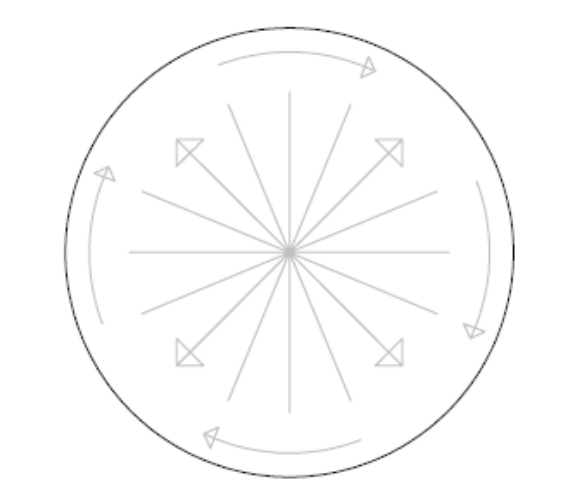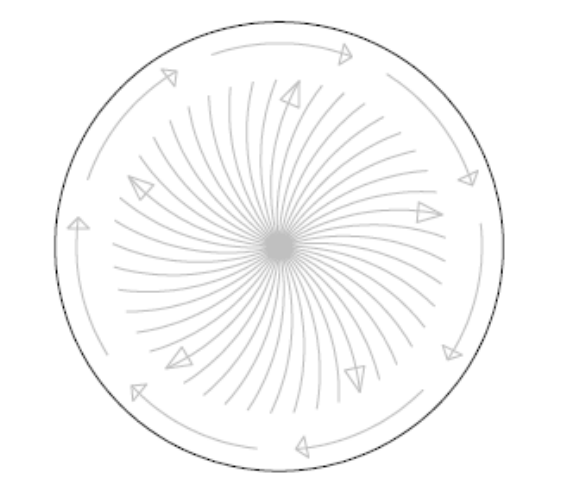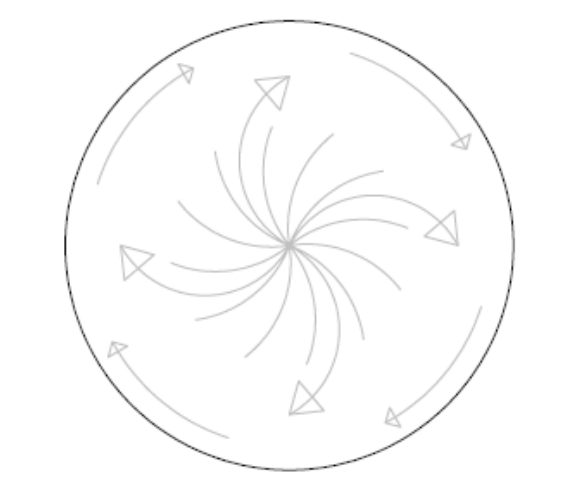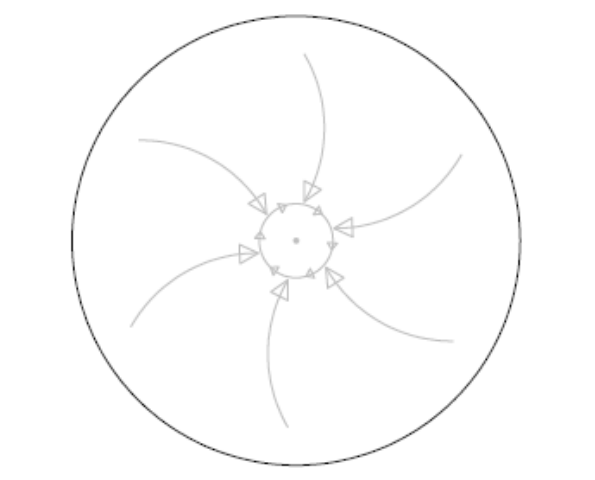Separator Machines Working Principles: Lead Angle, Material Flow Path – How they affect your Productivity Throughput
What is the Lead Angle?
The lead angle adjustment controls the path the material travels across the screen. In round vibratory separators, the lead angle can be best defined as the counterclockwise angle between the top and bottom weights when viewing the machine from above. When set to the correct lead angle, the material feed path should travel across the entire screen to maximize screening. The material feed path may vary with different materials and trial and error may be required to find your optimum setting. The lead angle can be adjusted on the bottom weight assembly. If multiple decks are used, the lead angle will need to be increased to achieve the same material feed path. Most vibratory circular separators have lead angles available in degree increments between 0-355°. However, nearly all applications will fall within the lead angle range of 0 to 90°.

0° Lead Angle
At a 0° Lead Angle: (also known as being “In Phase”), the material flows to the outside of the screen in straight lines, with limited or minimum separation. In the case of lower lead angles, the material will typically traverse around the outer diameter of the screen, failing to discharge properly.

15° Lead Angle
At a 15° Lead Angle the material begins to take on a spiral pattern, which is prominent enough to become noticeable on the screen. This spiral pattern helps maximize the amount of time the material stays on the screen, which in turn increases the chances that more material passes through the screen.

35° Lead Angle
At a 30-35° Lead Angle, the machine provides a rotation motion which increases the amount of time the material remains on the screen and is the maximum efficient screening pattern. The 35° lead angle is recommended for general purpose screening of dry materials and is the default factory setting on most machines.

60° Lead Angle
As the lead angle increases through the mid-level range, the rotation of the material increases along with the speed of discharge. Most manufacturers recommend 45°-60° as the lead angle for the classification of wet materials, a process also known as de-watering. Yet, as the lead angles increase past 60°, the material tends to start to turn in on itself, flowing back towards the center of the screen, which can increase the difficulty of oversize material to properly discharge.

90° Lead Angle
Many other common applications may require higher lead angles. These are operations that include scalping applications where the material needs to be held on the screen longer to ensure maximum throughput. These higher lead angles, while they increase the amount of true separation, decrease the amount of material discharged.
Lead Angle Importance
The Lead Angle is an important setting on circular vibratory separators, along with the correct top and bottom weight distribution and having the correct screen tension. However, while there are many factors that can necessitate adjustments to the settings on a round separator, the lead angle is a crucial working principle in optimal flow capacity and efficiency levels of any process.
Gerard Daniel’s Expertise
Gerard Daniel’s Performance™ Series of round vibratory separator machines effectively separate dry goods by size or liquids from solids. Proudly designed and assembled in the USA, engineered to last, and built with high-quality components – our machines are available with all of the lead angle options discussed above as well as a complete range of additional and replacement parts to keep them running in top condition.
Contact Our Experts to assist you in selecting the right machine and accessories for your needs.